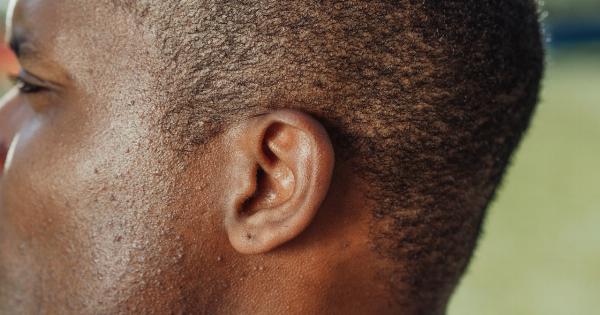Sexuality is an intrinsic aspect of human life that has been shaped by various physiological, psychological, and sociocultural factors. Over the years, researchers have been intrigued by the differences in sexual responses between men and women.
Understanding these differences can shed light on the intricate workings of the human brain and enhance our knowledge of human sexuality. This article explores the gender differences in sexual stimuli and brain responses.
1. Background
Before delving into the specific gender differences, it is crucial to establish some background information. Sexual stimuli can be categorized into two main types: visual and imagined.
Visual stimuli refer to explicit sexual images or videos, whereas imagined stimuli involve mentally conjuring sexual content without any visual aids.
2. Physiological Responses
When exposed to sexual stimuli, both men and women experience physiological responses, albeit with some variations. Research indicates that men generally exhibit quicker and stronger physiological responses compared to women.
For instance, males tend to experience a more rapid increase in heart rate, higher genital arousal, and greater overall sexual excitement.
3. Neural Activation
Modern neuroimaging techniques have enabled scientists to examine the neural aspects of sexual stimuli.
Studies have consistently reported gender differences in brain activation patterns during sexual stimulation, emphasizing the distinctive pathways for men and women. For men, visual sexual stimuli typically activate the amygdala, hypothalamus, and orbitofrontal cortex. Conversely, women tend to show relatively greater activation in the insula, anterior cingulate cortex, and prefrontal regions.
4. Emotional Processing
Emotions play a crucial role in sexual experiences. Men and women exhibit variations in how they process emotional aspects of sexual stimuli.
Men tend to focus more on the physical aspects and explicit content of sexual stimuli, while women are often more emotionally engaged, paying attention to contextual and emotional cues. These differences suggest that emotional processing is an essential component of sexual responses, and its role varies between genders.
5. Attentional Biases
Attentional biases refer to the tendency to direct attention towards specific stimuli. Men and women demonstrate different attentional biases towards sexual stimuli.
Men have a higher tendency to fixate on sexually explicit content, whereas women tend to allocate attention more broadly, considering both contextual and emotional aspects. These biases can be attributed to evolutionary factors and societal influences that shape the male and female perceptions of sexual stimuli.
6. Subjective Ratings
Understanding individuals’ subjective experiences is crucial to comprehending the gender differences in sexual stimuli. Research reveals that women exhibit a more substantial gap between physiological and subjective responses compared to men.
Women may, at times, demonstrate physiological arousal without necessarily experiencing subjective sexual desire. This discrepancy highlights the complex and multifaceted nature of women’s sexual responses.
7. Social and Cultural Influences
Gender differences in sexual stimuli and brain responses are not solely determined by biological factors. Socio-cultural influences significantly shape sexual experiences and expectations.
Societal norms, values, and taboos surrounding sexuality can impact individuals’ perceptions of sexual stimuli. Media, upbringing, and cultural background contribute to the variations observed in how men and women respond to sexual stimuli.
8. Neuroplasticity
The brain is a highly adaptable organ, capable of change and rewiring. Neuroplasticity refers to the brain’s ability to modify its structure and function based on experiences and environmental influences.
Gender differences observed in sexual stimuli and brain responses could be partially attributed to neuroplasticity. The brain’s plastic nature allows for the development of distinct neural pathways related to sexual stimuli, influenced by individual experiences and learned behaviors.
9. Implications and Future Directions
Understanding the gender differences in sexual stimuli and brain responses has several implications. Firstly, it highlights the importance of considering individual differences when studying human sexuality.
Secondly, it emphasizes the need for comprehensive sex education that acknowledges these differences. Lastly, it opens avenues for further research to delve deeper into the underlying mechanisms and provide more nuanced insights into human sexual responses.
10. Conclusion
In conclusion, gender differences play a significant role in shaping sexual stimuli perception and brain responses.
Men and women exhibit variations in physiological responses, neural activation patterns, emotional processing, attentional biases, subjective ratings, and social influences. Recognizing and understanding these gender differences enhance our appreciation of human sexuality and contribute to broader discussions surrounding individual experiences and societal expectations.




























